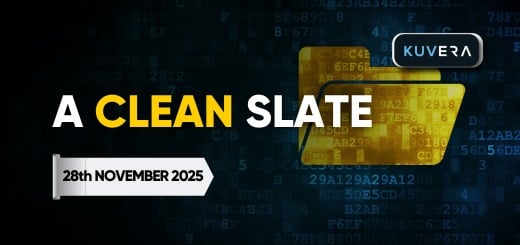In this edition, we talk about the latest GDP growth numbers, India’s widening trade deficit and GST collections. Also, the quarterly earnings report of Life Insurance Corporation, its first since it went public last month.
Welcome to Kuvera’s weekly digest on the most critical developments related to business, finance and markets.
tl;dr Hear the article in brief instead?
On May 31, 2012, the global banking giant HSBC said the Indian economy was like a “gasping elephant”. The strong commentary came after economic growth for the three months through March of that year slowed to 5.3%.
Exactly ten years later, on May 31 this week, the statistics ministry reported that gross domestic product growth for the January-March quarter of 2022 slipped to 4.1%.
If the elephant was gasping at 5.3%, what would be its condition at 4.1%! Well, we can only imagine.

To be fair, the two quarters a decade apart are vastly different and so a like-to-like comparison won’t be justified.
By 2012, India had recovered from the aftereffects of the 2008-2009 global economic downturn but the Manmohan Singh-led coalition government was struggling with a “policy paralysis” and faced widespread corruption allegations.
In 2022, Prime Minister Narendra Modi’s government is firing on all cylinders but is still recovering from the once-in-a-century pandemic even as global geopolitical developments have thrown a spanner in the works.
Moreover, despite the quarterly slowdown, full-year GDP growth was 8.7% for 2021-22. That’s impressive, isn’t it?

Well, based on data alone, it’s tough to get into a celebratory mood. Not only has India’s GDP growth slowed for three quarters in a row, but the annual growth also comes on the back of a sharp 6.6% contraction in 2020-21.
A deeper look at the data shows more worrying trends. For instance, the actual size of India’s economy has grown by just 1.5% from pre-pandemic levels two years ago.
Also, there is wide gap between the real GDP growth of 8.7% and the nominal GDP growth rate of 19.5%, indicating the high levels of inflation entrenched in the economy. Indeed, the GDP deflator—a measure of inflation—for 2021-22 was 10%.
From the people’s perspective, per capita net national income has actually fallen over the two-year period, to Rs 91,481 from Rs 94,270. In simple words, Indians have become 3% poorer on average from 2019-20 to 2021-22.
Similarly, per capita private consumption has also remained below pre-pandemic levels, meaning people in general are spending less than they were spending two years before as their incomes fell. No wonder, then, that everyone from FMCG companies to consumer electronics companies and automakers are feeling a demand squeeze.
All in all, the GDP numbers aren’t exactly something to cheer about and a sharp course correction is required for the elephant to find its breath again. It’s easier said than done, however, given the challenges India faces.
A worrying record
Data this week showed India’s merchandise exports grew 15.5% to $37.3 billion in May. But imports surged 56% to $60.62 billion, as purchases of crude oil and petroleum nearly doubled due to high prices. A two-and-a-half times jump in coal imports and an eight-fold surge in gold imports made matters worse.
The sharp rise in imports widened the trade deficit to a record $23.33 billion. This exceeds the previous high of $22.91 billion in November last year and marks the sixth time in nine months that the gap came in above $20 billion.
A rise in imports in itself is not a sign of worry, particularly in an expanding economy. But when the economy is growing in low single digits, a high double-digit increase in imports is definitely something to be concerned about—and even more so when exports are rising at a pace of less than a third.
The GST boon. Or is it really?

For the last many months, the central government has been highlighting the ever-increasing collections of the Goods and Services Tax and how it points out to a stronger and simpler tax regime that was implemented five years ago.
The government said this week GST revenue for May rose 44% from a year earlier to Rs 1.41 trillion. Although this fell from April’s record of Rs 1.68 trillion, this is the third time in 2022 the monthly collection crossed Rs 1.40 trillion.
Not everyone, however, is convinced about the success of the GST system. For one, the surge in GST collections over the past few months is due partly to high inflation. More importantly, the GST hasn’t helped states lift their tax revenue, according to research findings released this week by India Ratings.
India Ratings said the GST implementation didn’t result in any incremental benefit to States’ Own Tax Revenue, or SOTR. Moreover, State GST growth at an average 6.7% between 2017-18 and 2020-21 has been lower than the 9.8% growth recorded by the taxes subsumed under the GST during 2013-14 and 2016-17, it said.
The elephant in the market
Life Insurance Corporation this week reported a 17% drop in net profit to Rs 2,409 crore for the quarter ended March, though revenue rose almost 12% to Rs 2,11,471 crore. The results come barely weeks after the state-run insurance giant made a disappointing stock market debut following an initial public offering.
While the government raised Rs 20,560 crore by selling a small part of its stake, stock market investors are left poorer as LIC’s shares are now down about 15% from the IPO price.
Some analysts don’t even expect the shares to regain the IPO price anytime soon. Brokerage house Emkay Global, for instance, this week set a target price of Rs 875.
Emkay feels LIC is an “elephant that can’t dance”. It said that LIC is losing market share, faces operational challenges and that its private-sector peers show better growth prospects.
Emkay also said that LIC’s valuation isn’t as attractive as it seems—its market capitalisation of Rs 5.1 trillion is less than its Embedded Value of Rs 5.4 trillion. In fact, LIC’s Embedded Value would have been barely Rs 1.25 trillion but for the company’s decision to split its consolidated funds between participating and non-participating policyholders.
Those who find Emkay’s analysis too technical need only to check the stock market performance of LIC’s public and private-sector peers.
State-run New India Assurance and General Insurance Corporation both floated IPOs in late 2017 and collectively raised a tad more than what LIC mopped up. Both companies have lost more than 80% of their value since then.
In contrast, shares of HDFC Life Insurance have more than doubled since their debut in 2017 and ICICI Prudential Life Insurance’s have risen by two-thirds. Both are trading at two to four times their embedded value.
Market wrap
While LIC’s shares continued to struggle this week, the broader markets actually had a good time. The 30-stock BSE Sensex and the Nifty 50 each rose about 1.6% this week, clocking a third consecutive weekly gain.
The benchmark indices were led higher by heavyweight Reliance Industries, which jumped almost 8% this week amid reports that the billionaire Mukesh Ambani-led conglomerate was closing in on the acquisition of British pharmacy chain Boots in a tie-up with American buyout group Apollo Global.
Mahindra & Mahindra also climbed 8% as its vehicle sales more than tripled in May thanks to strong demand for its sport-utility vehicles such as Thar and XUV700, and as its tractor sales rose 50% ahead of the monsoon season.
IT companies TCS, Infosys and HCL Technologies were all 4-5% higher this week.
Aditya Birla Group company UltraTech, India’s biggest cement maker, was among the top Sensex losers this week as cement shares came under pressure in the wake of growing competition with the entry of Adani Group in the sector.
Other Headlines
- FY22 fiscal deficit at 6.7% of GDP against Budget aim of 6.9%, shows government data
- Core sector growth jumps to 8.4% in April from 4.9% in March
- Indian govt scurries for coal as power demand jumps across country
- ONGC’s Q4 net profit jumps 32% to Rs 8,860 crore
- Sun Pharma slips into the red with a loss of Rs 2,277 crore in Q4
- Maruti Suzuki’s car sales jump nearly four times in May but on a low base
- Tata Motors’ car sales rise nearly threefold in May as new models spur demand
- Domestic sales of Bajaj Auto, Hero MotoCorp soar in May
The Week Ahead
- The RBI’s Monetary Policy Committee will meet on June 6-8 and is widely expected to lift interest rates again.
- Auto industry group SIAM will release despatches for May by Indian automakers.
- Insurance regulator IRDAI will release first-year premium by life insurance companies.
Until next week, happy investing!
———–
Interested in how we think about the markets?
Read more: Zen And The Art Of Investing
Check out our “Investor Education Originals” on Youtube and get smart about investing.
Start investing through a platform that brings goal planning and investing to your fingertips. Visit kuvera.in to discover Direct Plans and Fixed Deposits and start investing today.
#MutualFundSahiHai #KuveraSabseSahiHai!










